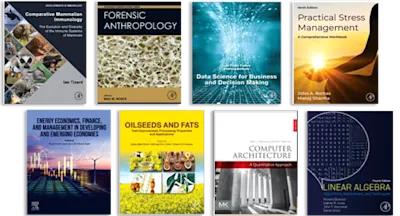
Working with Serious Mental Illness
A Manual for Clinical Practice
- 1st Edition - April 11, 2000
- Imprint: Bailièrre Tindall
- Authors: Catherine Gamble, Geoff Brennan
- Language: English
In todays mental health services, there is a pressing need for practitioners to place greater emphasis on working with users of services and to use skills which have a sound… Read more
Purchase options

In todays mental health services, there is a pressing need for practitioners to place greater emphasis on working with users of services and to use skills which have a sound theoretical basis. This book focuses on evidence-based practices but reflects that in mental health, the best evidence is the personal experience of the user. This book seeks to guide, plan and suggest down-to-earth treatment ideas for individuals on a day to day basis. There are many publications which explore theoretical aspects of service delivery or provide an in-depth analysis of specific clinical interventions. However, how practitioners comprehensively amalgamate theory with their practice is often missing. This book fills that gap.
Section 1; Perceptions of SMI and treatment methods
Includes a unique chapter from a user which vividly illustrates the experience of mental illness, as well as an introduction to treatment methods, stress vulnerability and the diagnostic process.
Section 2: Assessment; Choosing and Using
The assessment process is the cornerstone of effective interventions, and this section looks at how to choose and use some of the tools available. It addressesthe specific skills in focussing this information towards achieving clients goals and identifying risk factors.
Section 3; Interventions
This section provides chapters on a range of interventions specific to individual client needs. It reflects the often complex picture of needs which clients experience.
Section 4; Cautions in Effective Treatment.
This section addresses those issues which often underpin the success or failure of interventions. Its aim is to guide practitioners to reflect further on issues which surround their relationships with clients, including culture, ethical issues and professional considerations
Whether in training or in practice, you will find this book a practical, user-friendly guide to working with clients and their families. Easy to read, clearly designed, and, above all, focussing on the needs of practitioners and their clients, it is the essential handbook for practitioners in this challenging area.
Section 1; Perceptions of SMI and treatment methods
Includes a unique chapter from a user which vividly illustrates the experience of mental illness, as well as an introduction to treatment methods, stress vulnerability and the diagnostic process.
Section 2: Assessment; Choosing and Using
The assessment process is the cornerstone of effective interventions, and this section looks at how to choose and use some of the tools available. It addressesthe specific skills in focussing this information towards achieving clients goals and identifying risk factors.
Section 3; Interventions
This section provides chapters on a range of interventions specific to individual client needs. It reflects the often complex picture of needs which clients experience.
Section 4; Cautions in Effective Treatment.
This section addresses those issues which often underpin the success or failure of interventions. Its aim is to guide practitioners to reflect further on issues which surround their relationships with clients, including culture, ethical issues and professional considerations
Whether in training or in practice, you will find this book a practical, user-friendly guide to working with clients and their families. Easy to read, clearly designed, and, above all, focussing on the needs of practitioners and their clients, it is the essential handbook for practitioners in this challenging area.
Trainee and practitioners in mental health practice working with people with serious mental health problems
Students on Thorn programmes and mental health practitioner courses involved with serious mental illness
Students taking courses in family therapy.
Students on Thorn programmes and mental health practitioner courses involved with serious mental illness
Students taking courses in family therapy.
Introduction. Section One - Manifestations of Serious Mental Illness:A View from Within - User Perspective.An Introduction to Psychosocial Interventions. Stress Vulnerability. Severe Mental Illness: Symptoms, Signs and Diagnosis. Section Two - Assessments: Choosing and Using. Assessments: A Rationale and Glossary. Assessing Clients Needs: The Semi Structured Interview. Using a Low Expressed Emotion Approach to Develop Positive Therapeutic Alliances. Section 3 Interventions. Dealing with Voices and Strange Thoughts. Lack of Motivation, Confidence and Volition. Working with Families and Informal Carers. Coexistent Substance Use and Psychiatric Disorders. Working with People with SMI Who are Angry. Working with People with SMI at Risk of Offending. Psychopharmacology. Section Four - Considerations for Effective Practice. Serious Mental Illness: Cross Cultural Issues. Ethical Considerations. Professional Considerations.
- Edition: 1
- Published: April 11, 2000
- Imprint: Bailièrre Tindall
- Language: English
CG
Catherine Gamble
Affiliations and expertise
Consultant Nurse, South West London and St George's Mental Health Care Trust, London, UKGB
Geoff Brennan
Affiliations and expertise
Research Fellow, City University, London, UK